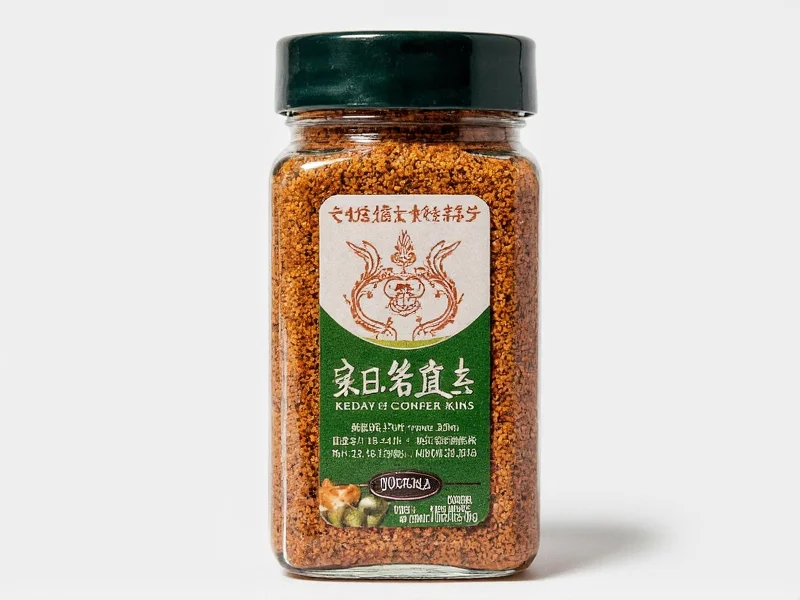"Ebtb seasoning" appears to be a common keyboard typo for "BBQ seasoning" (where the "t" key is accidentally pressed instead of the second "b" on QWERTY layouts). BBQ seasoning is a versatile dry rub blend primarily featuring paprika, garlic powder, onion powder, brown sugar, and chili powder, used to enhance grilled and smoked meats with its characteristic sweet, smoky, and slightly spicy flavor profile.
When searching for "ebtb seasoning," you're likely looking for information about BBQ seasoning—a staple in American grilling culture. This comprehensive guide explores everything you need to know about this essential cooking component, from its core ingredients to regional variations and practical usage tips.
Understanding BBQ Seasoning Composition
BBQ seasoning, often called a "dry rub," combines multiple spices to create complex flavor layers that penetrate meat during cooking. Unlike marinades that work primarily on the surface, dry rubs like BBQ seasoning form a flavorful crust while seasoning deeper into the protein. The foundation typically includes:
- Paprika - Provides color and mild sweetness
- Brown sugar - Creates caramelization and balances heat
- Garlic and onion powder - Adds savory depth
- Chili powder - Contributes mild heat
- Salt and black pepper - Essential flavor enhancers
| Common BBQ Seasoning Ingredients | Flavor Contribution | Typical Percentage |
|---|---|---|
| Paprika | Earthy, slightly sweet | 25-30% |
| Brown sugar | Sweetness, caramelization | 20-25% |
| Garlic powder | Savory, umami | 10-15% |
| Onion powder | Sweet, pungent base note | 10-15% |
| Chili powder | Mild heat, complexity | 5-10% |
| Salt | Flavor enhancer | 8-12% |
| Black pepper | Sharpness, warmth | 5-8% |
Regional BBQ Seasoning Variations Across America
BBQ seasoning isn't one-size-fits-all—regional preferences significantly influence ingredient ratios and additional components. Understanding these differences helps you select or create the perfect blend for your culinary needs.
Texas-Style: Features heavier black pepper content with minimal sugar, reflecting the state's preference for beef-centric barbecue. Many Texas blends include cumin for earthy depth.
Kansas City-Style: The most balanced approach with equal emphasis on sweet (brown sugar), smoky (paprika), and spicy elements. This versatile blend works well with all meats.
Carolina-Style: Vinegar-based in wet form, but dry rubs often include mustard powder and less sugar, creating a tangy profile that complements pulled pork exceptionally well.
Memphis-Style: Known for its sweet heat, Memphis blends typically contain higher sugar content with noticeable cayenne pepper presence.
Creating Your Own Homemade BBQ Seasoning
Commercial blends often contain anti-caking agents and preservatives you might prefer to avoid. Crafting your own BBQ seasoning gives you complete control over ingredients and flavor balance. This basic recipe serves as an excellent starting point that you can customize to your taste preferences.
Basic All-Purpose BBQ Seasoning Recipe
Yield: Approximately 1 cup
Prep time: 5 minutes
Ingredients:
- ¼ cup paprika
- 3 tablespoons brown sugar
- 2 tablespoons garlic powder
- 2 tablespoons onion powder
- 1 tablespoon chili powder
- 1 tablespoon kosher salt
- 1 tablespoon black pepper
- 1½ teaspoons cayenne pepper (adjust for heat preference)
- 1 teaspoon dry mustard
Instructions:
- Combine all ingredients in a medium bowl
- Whisk thoroughly until completely uniform in color
- Transfer to an airtight container
- Store in a cool, dark place for up to 6 months
Pro Tip: For enhanced flavor complexity, toast whole spices (like cumin seeds or coriander) before grinding them into powder form. This technique works particularly well for creating competition-level BBQ seasoning blends.
Optimal Application Techniques for BBQ Seasoning
How you apply BBQ seasoning significantly impacts the final result. Follow these professional techniques to maximize flavor development:
Timing Matters: Apply seasoning at least 1 hour before cooking—ideally 12-24 hours in advance—to allow flavors to penetrate the meat. The salt in the blend helps break down proteins, creating a more tender texture.
Moisture is Key: Lightly coat meat with oil or mustard before applying dry rub. This creates a "glue" that helps the seasoning adhere and prevents it from burning during cooking.
Pressure Application: Press the seasoning firmly into the meat surface with your fingertips rather than simply sprinkling it on. This ensures better adhesion and more even coverage.
Layering Strategy: For extended cooking times (like brisket or pork shoulder), apply half the seasoning before cooking and the remainder during the final hour to maintain vibrant flavor without burning.
Common BBQ Seasoning Mistakes to Avoid
Even experienced grillers sometimes make these critical errors that diminish the effectiveness of their BBQ seasoning:
- Applying to wet surfaces: Pat meat dry before seasoning application to prevent the rub from washing away
- Over-application: A thin, even layer works better than thick clumps that can burn
- Ignoring meat type: Delicate fish requires lighter seasoning than robust beef cuts
- Storing improperly: Keep in airtight containers away from heat and light to preserve potency
- Using old spices: Replace individual spice components every 6-12 months for maximum flavor impact
Tailoring BBQ Seasoning to Specific Proteins
Different meats respond best to customized seasoning approaches. Understanding these nuances elevates your grilling results significantly:
For Chicken: Increase garlic and onion powder by 25% while reducing heat elements. Add 1 teaspoon of dried thyme or rosemary for herbal complexity that complements poultry.
For Beef: Boost black pepper content and consider adding 1 teaspoon of ground coffee to enhance the Maillard reaction during searing. Coffee creates a richer crust without imparting noticeable coffee flavor.
For Pork: Increase brown sugar by 20% and add ½ teaspoon of ground allspice for that classic sweet-smoky profile that complements pork's natural richness.
For Vegetables: Reduce salt content by half and increase paprika while eliminating chili powder. The milder blend won't overpower vegetable flavors while still providing that characteristic BBQ essence.











 浙公网安备
33010002000092号
浙公网安备
33010002000092号 浙B2-20120091-4
浙B2-20120091-4